Welcome to Part 2 of our Tasting Sake in Japan Series!
In the first article, Tasting Sake in Japan / Part 1: What is sake?, we covered essential information about how sake, a Japanese alcohol made primarily from rice, is made, its various types, and famous production regions. Having studied the basics of sake, you’re probably eager to experience its taste.
For those who think that just learning the facts is boring, you’re right—tasting sake is the best way to truly understand it!
In Part 2 of our series, we will explore how to enjoy sake and the proper etiquette. This information is crucial for fully appreciating sake.
Tasting Sake in Japan Series: Part 2 – How to Enjoy Sake
Just one more step before you take your first sip -let’s learn the best ways to enjoy sake!!
Table of Contents
How to enjoy Sake – Tasting Sake Process
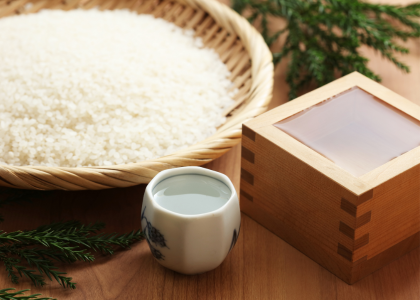
Let’s start by learning the basic sake-tasting process. When you taste sake, there are three characteristics to focus on: aroma, color, and taste.
As we learned from a previous article, each sake has different aromas and colors, mainly determined by its making process. Savoring each sip carefully and appreciating its characteristics is the first step to enjoying sake.
Below is the basic procedure for enjoying your sake.
| ① Appearance and Aroma |
| ・Observing the color, clarity, and viscosity of sake ・Evaluating the aroma profile, noting fruity, floral, or earthy notes |
| ② Taste and Texture |
| ・Sipping sake and experiencing its flavor profile ・Noting the balance between sweetness, acidity, and umami ・Assessing the texture and mouthfeel of sake |
| ③ Finish and Aftertaste |
| ・Reflecting on the lingering flavors and sensations after swallowing sake ・Noting the length and complexity of the finish |
Cups and bottles for serving sake
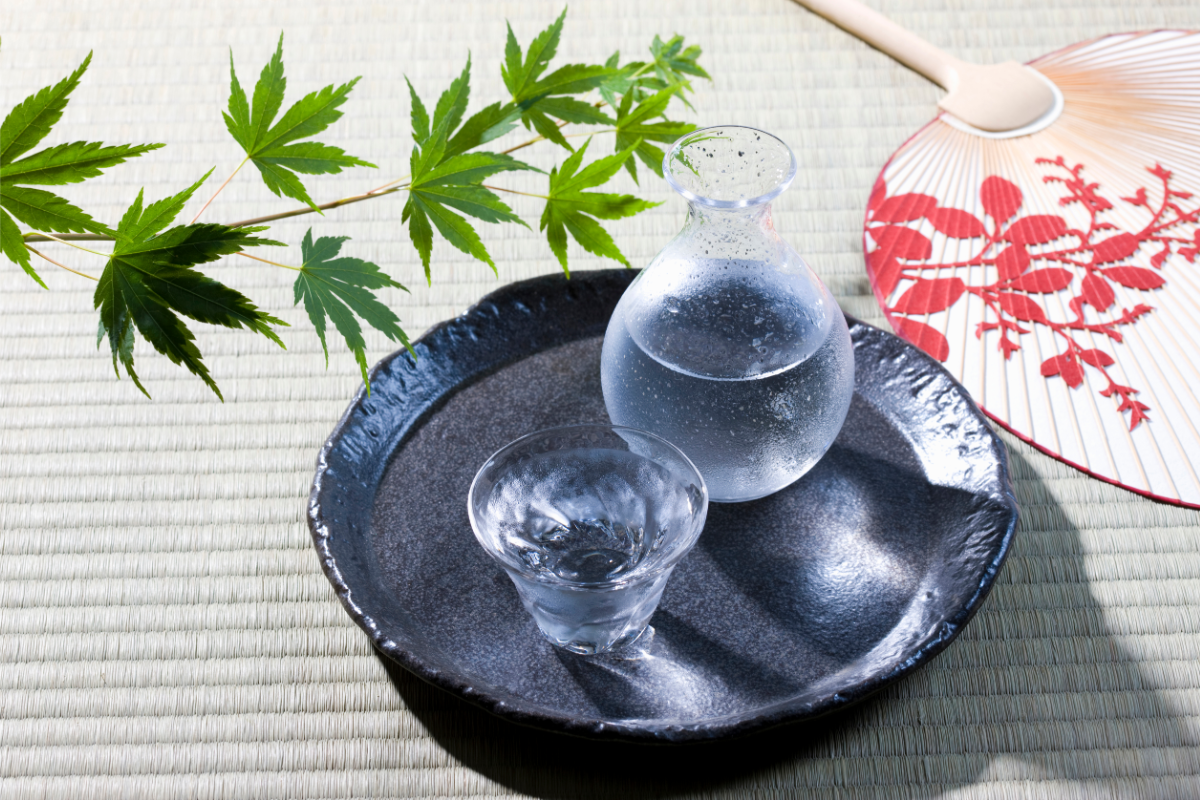
Cups and bottles are also important elements in enjoying sake.
While wine is typically enjoyed with a wine glass, sake vessels come in various materials and shapes.
Let’s first get to know the names and characteristics of the basic tools!
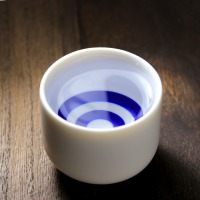 Ochoko (お猪口)
Ochoko (お猪口)
“Ochoko” is a typical cup used for drinking sake.
The characteristic of an ochoko is its size, which is small enough to be finished in one sip.
Commonly used sizes are two shaku (36 ml) or 2.5 shaku (45 ml) per cup.
Incidentally, the name “ochoko” originates from the phrase “a little thing.”
★When measuring sake, traditional Japanese units of measurement are often used.
1 shaku(勺) = approximately 18 ml
1 go(合) = 10 shaku(勺) = approximately 180 ml
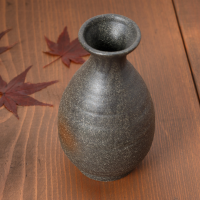 Tokkuri (徳利)
Tokkuri (徳利)
A “Tokkuri” is a sake vessel with a tapered neck and rounded body. Sake is transferred from the bottle into the tokkuri, which is used at the table to pour sake into cups.
There are various theories, but it is said that the sound made when pouring sake is the origin of its name. Typically, a tokkuri holds 1 go(合), approximately 180 ml. In most cases, when you drink sake at a restaurant, ochoko and tokkuri are provided as a set.
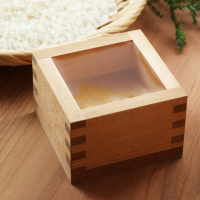 Masu (升)
Masu (升)
”Masu” is a wooden, square-shaped vessel used for drinking sake.
Originally, it was used as a measuring tool for liquid and grain.
Masu is often used on auspicious occasions such as weddings and seasonal events.
The taste of sake can slightly change depending on the material and shape of the vessel. Materials like glass, ceramic, and porcelain affect the temperature of the sake. Additionally, the container’s shape alters the surface area exposed to the air.
For example, a small ochoko, due to its low capacity, can enjoy sake that maintains a stable temperature. Thicker ceramic vessels can retain temperature longer, allowing for prolonged enjoyment. Vessels with a wide diameter enhance the spread of the aroma, enabling you to fully appreciate the sake even before tasting it.
How to serve Sake
How to hold Ochoko and Tokkuri
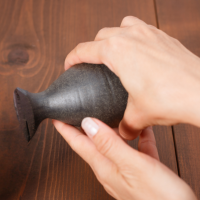
・Pouring
You pour from the Tokkuri into the Ochoko.
Hold the middle of the Tokkuri with your right hand and support the bottom with your left hand. At this point, the right hand should be facing up with the back of the hand.
Pouring with your palm facing up is called “Sakate-tsugi(逆手注ぎ)” and is considered poor manners, so be careful…!
In addition, it is preferred to fill the Ochoko to about 80% rather than filling it to the brim.
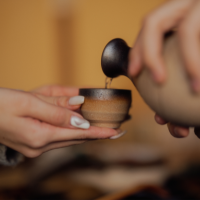 ・Receiving
・Receiving
When receiving sake, you should hold the ochoko in your hands rather than placing it on the table.
Lightly hold the cup with one hand and support the bottom with the other.
If your companion’s cup is empty, offer to pour sake for them in return.
★You can check how to pour and receive sake in the video below!! (1:21~3:00)
Temperatures
Sake can be enjoyed at various temperatures (5°C to 55°C).
Since the taste varies with temperature, finding your preferred way to drink is one of the ways to enjoy sake!
Each temperature range has its name as below.
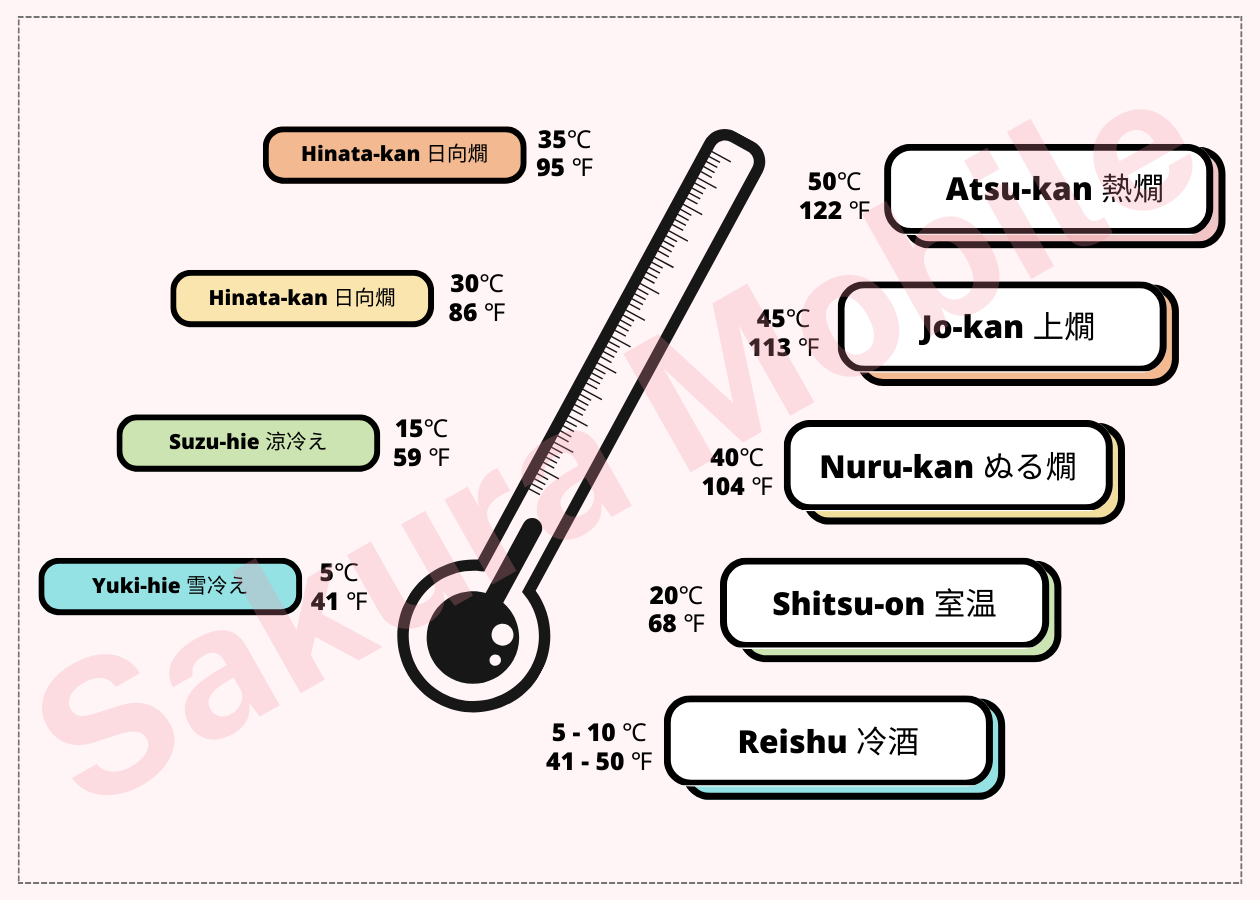
Atsu-kan (あつ燗)
| Characteristic | The tokkuri and ochoco are hot to touch. Vapor rises from tokkuri. |
| Taste | The aroma becomes sharply pronounced and it tastes dry with a clean finish. |
| Recommended for… | Junmai sake 純米酒 |
| Note | When you want to fully enjoy the distinctive flavors! |
Jo-kan (上燗)
| Characteristic | A temperature that feels warm when holding the cup. Vapor rises when the sake is poured. |
| Taste | It offers a rounded flavor and crisp taste. |
| Recommended for… | Junmai sake純米酒 Honjozo sake 本造譲酒 |
| Note | - |
Nuru-kan (ぬる燗)
| Characteristic | A temperature that feels lukewarm when holding the cup. |
| Taste | It enhances the aroma and flavor of the rice |
| Recommended for… | Junmai sake 純米酒 Kunsyu 薫酒: Aromatic types (ginjo sake) |
| Note | Nuru-kan is further categorized by temperature as follows: Hitohada-kan (35°C): A soft and mild taste can be experienced. Hinata-kan (30°C): A temperature where you don’t feel either cold or hot, with a subtle hint of the sake’s aroma and flavor. |
Shitsu-on (室温)
| Characteristic | The temperature at which it feels slightly cool when you take it into your mouth. |
| Taste | The aroma and flavor will give an impression of softness. |
| Recommended for… | Jukushu 熟酒:Matured types of sake Kokushu 酵酒: Full-bodied type ( junmai sake) |
| Note | - |
Reishu (冷酒)
| Characteristic | This refers to chilled sake |
| Taste | The flavor becomes sharper and more refined. |
| Recommended for… | Soushu 爽酒: light and smooth types of sakes (honjozo sake) Kunshu 薫酒: highly aromatic sakes (ginjo or daiginjo sake) |
| Note | Reishu is further categorized by temperature as follows: Yukibie (5°C): A temperature so cold that condensation forms on the vessel. Suzubie (15°C): The temperature of the sake after it has been out of the refrigerator for a short time. |
*How is sake heated or iced??
Etiquette – things you should not do when you drink Sake
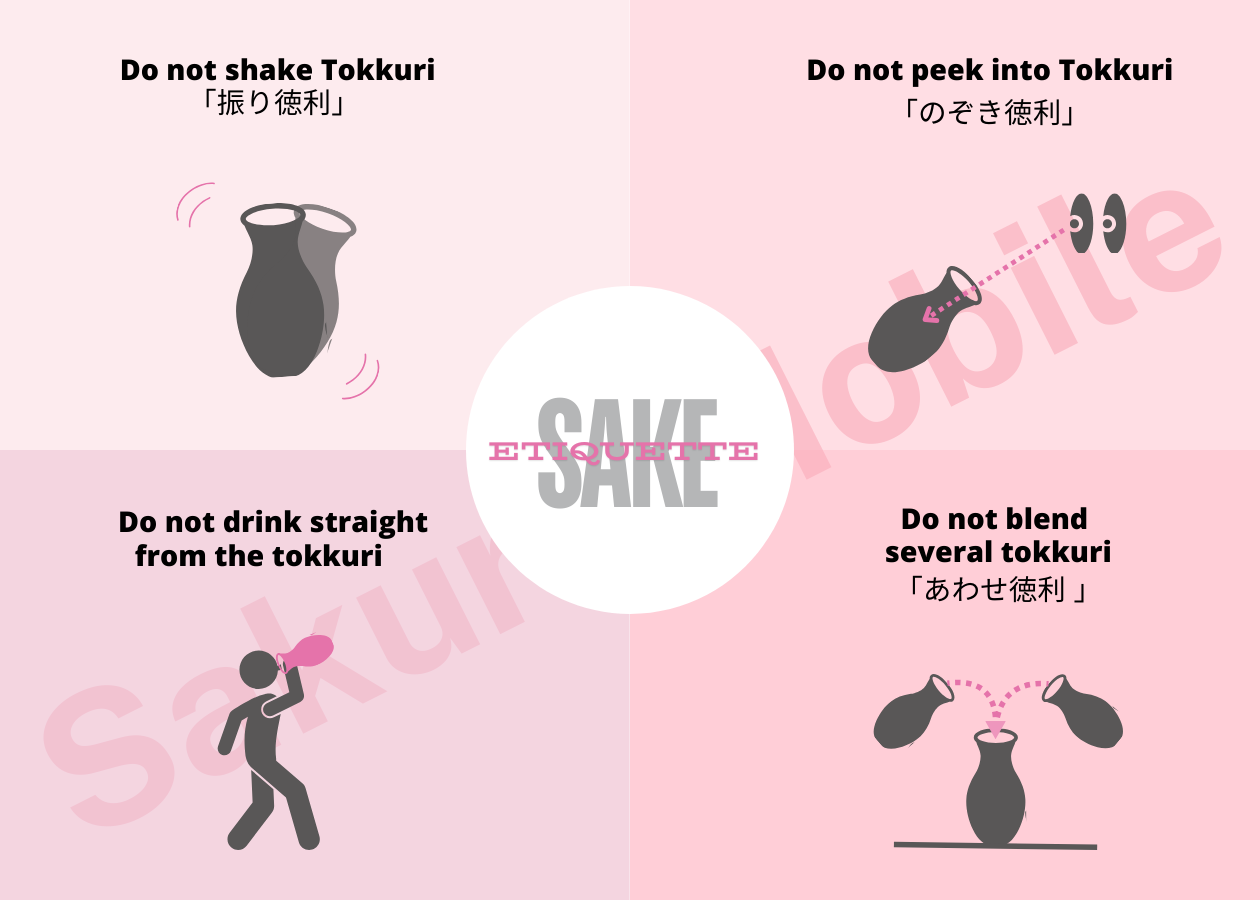
Just as there are manners for dining, there are also manners for enjoying sake. To enhance your sake experience, here are some sake etiquette tips you should know.
Mastering these will make you shine as a sake master in any social setting!!
| ★ Do not shake Tokkuri「振り徳利」 |
| It is considered poor etiquette to shake the tokkuri to check if there is any sake left, as shaking will cool down warmed sake. |
| ★ Do not peek into Tokkuri「のぞき徳利」 |
| Similarly, peeking into the tokkuri to check the remaining sake is also frowned upon. |
| ★ Do not drink straight from the tokkuri |
| A tokkuri is meant for pouring sake into smaller vessels. Even if you are drinking alone, do not drink directly from the tokkuri as you would from a beer bottle. |
| ★ Do not blend the contents of several tokkuri「あわせ徳利」 |
| Do not gather small amounts of leftover sake and combine them into one tokkuri. This can affect the temperature and flavor of the sake. |
You might feel like, “There are too many rules!”
While it’s good to be aware of these manners, they are not strict formalities. Consider them as hints for enjoying sake more appropriately!
Conclusion
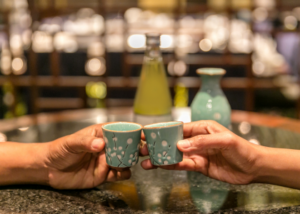
Did you realize there are various ways to enjoy sake, not just based on how it’s made or the differences in its ingredients, but also depending on the vessels used and the temperature at which it’s served? Yes, sake is profound, and the ways to enjoy it are limitless!
Through this article, you’ve likely found yourself even more drawn into the world of sake.
Moving beyond the basics, understanding the nuances of tasting, selecting the appropriate serving vessels, and following cultural etiquette will enhance your enjoyment and respect for sake.
Remember, these guidelines are meant to help you enjoy sake more, not to make things complicated!
In future articles, we plan to introduce not only the basic knowledge about sake, as we have so far, but also breweries and restaurants across Japan where you can actually enjoy sake.
Sake is more than just a drink—let’s continue to explore the world of sake together!
See you in the next article!
Related Article
If you haven’t read our first article of the Tasting Sake in Japan series, check it out!
Get a SIM card or Pocket WiFi to make traveling easier!
As we mentioned before, having internet data can be helpful when planning your day, contacting your friends, and idling away time. If you need a SIM card or a pocket WiFi, we recommend Sakura Mobile! We offer excellent services such as delivery to your hotels, unlimited data options, full English support, and more! In addition, you can pick up your SIM card or pocket WiFi directly upon arriving at our counter at Kansai International Airport.
Here are some features of Sakura Mobile:
・Unlimited data options for SIM cards
・Portable Wi-Fi you can easily return
・Full English support
・Stable internet network
By reserving online before departing, you can
- Lower your rental fees
- Avoid stock shortages at the airport
- Start your trip with internet data
To learn more about data and WiFi options for your trip, check out our products below.
↑ Go back to the table of contents
CUSTOMER’S VOICE
↑ Go back to the table of contents



